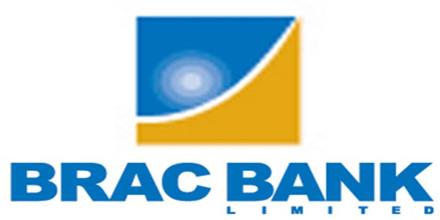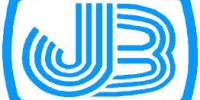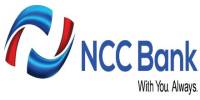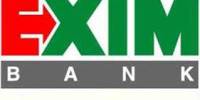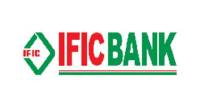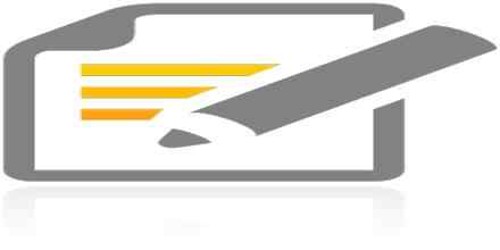SME Audit of Regulatory & Internal Control Department of BRAC Bank
BRAC Bank Limited is a full service scheduled commercial bank. It has both local and International Institutional shareholder. The bank is primarily driven with a view of creating opportunities and pursuing market niches not traditionally meet by conventional banks. BRAC Bank has been motivated to provide “best-in-the-class” services to its diverse assortment of customers spread across the country under an on-line banking dais.
Today, BRAC Bank is one of the fastest growing banks in the country. In order to support the planned growth of its distribution, network and its various business segments, BRAC Bank is currently looking for impressive goal oriented, enthusiastic, individuals for various business operations.
The bank wants to build a profitable and socially responsible financial institution. It carefully listen to the market and business potentials, It is also assisting BRAC and stakeholders to build a progressive, healthy, democratic and poverty free Bangladesh. It helps to make communities and economy of the country stronger and to help people achieve their financial goals. The bank maintains a high level of standards in everything for customers, shareholders, acquaintances and communities upon, which the future affluence of company rests.
About BRAC Bank
BRAC Bank is a scheduled commercial bank established under the Banking Companies Act, 1991 and incorporated as a public company limited by shares on 20 May, 1999 under the Companies Act, 1994 in Bangladesh. The primary objective of the Bank is to carry on all kinds of banking business. The Bank could not start its operation till 03 June, 2001 since the activity of the Bank was suspended by the High Court of Bangladesh. Subsequently, the judgment of the High Court was set aside and dismissed by the Appellate Division of Supreme Court on 04 June, 2001 and accordingly, the Bank has started operations from 04 July, 2001. BRAC Bank (BRAC) is a fully operational commercial bank that was founded in July 2001 by BRAC NGO, one of the largest development finance institutions in the world. The bank’s objectives include providing comprehensive commercial banking services, building a profitable and modern, full-service financial institution, and pursuing profitable market niches in the Small and Medium Enterprise (SME) business sector not traditionally met by conventional banks. The bank’s main portfolio products include loans for small and medium sized entrepreneurs; personal loans, credit cards and multiple deposit accounts for retail customers; and specialized retail products tailored to religious restrictions. The bank also provides corporate deposit and loan products as well as non-resident Bangladeshi remittance services. BRAC‟s distribution network of 74 branches, 60 SME service center, 424 small and medium enterprise unit offices, and 212 ATMs across Bangladesh and now reach more than 10, 00,000 retail customers. The Bank is constantly coming up with new products. Recently BBL has introduced Visa Silver and Visa Gold both Local and International credit cards; and further more the Bank is in the process of introducing VISA Debit card. In the years ahead BRAC Bank expects to introduce many more services and products as well as add a wider network of SME unit offices, Retail Branches and ATMs across the country.
The Banks operate under a “Double Bottom Line” agenda where profit and social responsibility to hand in hand as it strives towards a poverty free, enlightened Bangladesh.
Corporate Vision
Building profitable and socially responsible financial institution focused on Market and Business with Growth potential, thereby assisting BRAC and stakeholders to build a “just, enlightened, healthy democratic and poverty free Bangladesh”.
Corporate Mission
- Sustained growth in Small & Medium Enterprise sector.
- Continuous low-cost deposit Growth with controlled growth in retail assets.
- Corporate Assets to be funded through self-liability mobilization. Growth in Assets through syndications and investment in faster growing sectors.
- Continuous endeavor to increase non-funded income.
- Keep our debt charges at 2% to maintain a steady profitable growth.
- Achieve efficient synergies between the bank’s branches, SME unit offices and BRAC field offices for delivery of remittance and Bank’s other products and services.
- Manage various lines of business in a full controlled environment with no compromise on service quality.
- Keep a divers, far flung team fully controlled environment with no compromise on service quality.
- Keep a diverse, far flung team fully motivated and driven towards materializing the bank’s vision into reality.
Core Values
BRAC Bank’s Strength emanates from its owner – BRAC. This means, BRAC Bank hold the following values and which is guided by BRAC
- Value the fact that one is a member of the BRAC family.
- Creating an honest, open and enabling environment.
- Have a strong customer focus and build relationships based on integrity, superior service and mutual benefit.
- Strive for profit & sound growth.
- Work as team to serve the best interest of our owners.
- Relentless in pursuit of business innovation and improvement.
- Value and respect people and make decisions based on merit.
- Base recognition and reward on performance.
- Responsible, trustworthy and law-abiding in everywhere.
Goal of the Bank
BRAC Bank will be the absolute market leader in the number of loans given to small and medium sized enterprises throughout Bangladesh. It will be a world – class organization in terms of service quality and establishing relationships that help its customers to develop and grow successfully. It will be the Bank of choice both for its employees and its customers, the model bank in this part of the world.
Bank’s Culture
Bank has adopted trust as a corporate value which is acronym for team work, respect for all people, unquestionable integrity, excellence in everything, Sense of urgency in getting things done and total commitment. All employees are expected to conduct themselves in accordance with the rules and regulations of the bank.
Slogan
The slogan of BRAC Bank is “Astha Obichol”. These two words are Bengali words that denote enormous trust on the organization.
Logo
The logo of BRAC Bank has been made keeping in mind the goal of the organization. The square structure of the logo means solid and strong. The golden color means the “Sonar Bangla”, rising line means the rising BRAC Bank, and blue is the beautiful sky where sun is shining brightly.
Target Customers
As the main product of BRAC Bank Ltd is SME, BRAC Bank has a strong SME focus and has developed a wide range of SME business products, these are customized for specific localized small and medium business across the country. The SME loan products cover a range of rural, semi-urban and urban financial needs in the market. Besides them, industries, transport business, education institutions, medical centers, marine business, any other high worth companies, individuals, etc are also the main customers of the bank. The bank has the ATM card and Credit card facility, so the users of the same are also in target.
Regulatory & Internal Control Department
Regulatory and Internal Control Department has been restructured to focus more on Regulatory Issues and Internal Control Mechanism. The main objective of this Regulatory & Internal Control function to put the bank in a balanced position of Risk and Return, and no Risk should be unidentified and non-calculative Regulatory and Internal Control functions ensures subject related to Regulatory Bodies are handled correctly. R&IC is the point of contact for regulatory inspection/query on the operation of the bank. Being in the middle of Regulatory Bodies and internal Departments; it serves as a connection between Regulatory authorities and the Bank.
For all the banks, Central Bank (Bangladesh Bank) is the primary regulator, who governs the activities of the banks. TAX authority, Finance Ministry, Commerce Ministry, Security Exchange Commission etc are the other regulatory bodies, whose directives have significant impact on banks business.
The Wings of Regulatory & Internal Control Department are:
- Compliance & Monitoring
- Internal Audit & Inspection
- IT Audit & System Security
Compliance and Monitoring Unit undertakes periodic and special review of the branches and departments of the head office for identifying and correcting operational lapses. Internal Audit & Inspection Unit conducted Risk Based Audit and award ratings for the branches. Other than the regular Control Activity, Fraud and Forgeries are investigated through this department as advised by the management.
Internal auditing is an independent, objective assurance and consulting activity designed to add value and improve an organization’s operations. It helps an organization accomplish its objectives by bringing a systematic, disciplined approach to evaluate and improve the effectiveness of risk management, control, and governance processes. Professionals called internal auditors are employed by organizations to perform the internal auditing activity.
Scope of Internal Audit
The scope of internal auditing within an organization is broad and may involve topics such as the-
- Efficacy of operations,
- The reliability of financial reporting,
- Deterring and investigating fraud,
- Safeguarding assets and
- Compliance with laws and regulations.
Internal auditing frequently involves measuring compliance with the entity’s policies and procedures. However, internal auditors are not responsible for the execution of company activities; they advise management and the Board of Directors (or similar oversight body) regarding how to better execute their responsibilities. As a result of their broad scope of involvement, internal auditors may have a variety of higher educational and professional backgrounds.
Role in internal control
Internal auditing activity is primarily directed at improving internal control. Internal control is broadly defined as a process, affected by an entity’s board of directors, management, and other personnel, designed to provide reasonable assurance regarding the achievement of objectives in the following internal control categories:
- Effectiveness and efficiency of operations.
- Reliability of financial reporting.
- Compliance with laws and regulations.
Management is responsible for internal control. Managers establish policies and processes to help the organization achieve specific objectives in each of these categories. Internal auditors perform audits to evaluate whether the policies and processes are designed and operating effectively and provide recommendations for improvement.
Internal Audit & Inspection
BRAC Bank‟s Internal Audit & Inspection is divided into two parts-
- Branch Audit
- Department Audit
Activities of Branch Audit & Department Audit: Branches and Departments were audited following the procedures of Risk Based Audit and it appears to have been proved very successful. BRAC Bank has Risk Based Audit Checklist for all the Departments. Surprise Inspection is conducted to maintain the strict monitoring. BRAC Bank follows Risk based audit structure by introducing the system the lapses pertaining to possible risks are instantly referred to the concerned officers for their opinions confirming spot rectification. After completion of audit of a Branch/Department, Audit Report with Management response is to be completed within next 48 hours. A meeting is held in presence of Department Heads and Audit Team and the Meeting Minutes will be submitted to the Managing Director for his comment. Other activities of Internal Audit & Inspection are as follows:
- To carry out surprise checks in the sensitive areas.
- To conduct investigation on different issues as per management requirements.
- To conduct in verifying the control policies and procedures.
- Reviewing the TOR and checklist on the basis of risk.
Department Audit
Internal Audit Team Conduct Audit on the Following Departments
- Treasury
- Credit Risk Management (Retail, SME & Corporate)
- Loan Origination
- Deposit Origination
- Central verification Unit
- Business relationship & Support
- Phone Banking
- Trade & Remittance
- Corporate Banking
- Corporate Banking service
- SME banking Service
- Retail banking service
- Probashi Banking Service
- Finance Administrative Department
- Special Asset Management (SAM)
Credit defined in seven wings
- Corporate Credit
- Retail Credit
- SME Credit
- Cards Credit
- Central Verification Unit
- Central Collection Unit
- Impaired Asset Management SME and Retail.
Credit Risk Assessment
Before extending credit facilities BRAC Bank should be satisfied that the applicant qualifies the following five essentials, which may be termed as 5C‟s namely:
- Character- Intention to pay the Loan
- Capacity- Borrower’s competence in the field of employ to fund profitability and ability to generate income
- Capital- Financial strength to cover a risk
- Conditions- It is general business condition
- Collateral- Implies additional securities
Following general principles of lending is checked by me in assessing all loan files:
- Customer’s character for integrity and willingness to repay
- Approve when the customer has capacity and ability to repay
- Only extend credit if bank can sufficiently understand and manage the risk
- Always use common sense and past experience in conjunction with thorough evaluation and credit analysis
- Never take decision based solely on customers reputation, accepted practice, other lender’s risk assessment or the recommendations of other officers
- Credit officers are always proactive in identifying, managing and communicating credit risk
- Always diligent in ensuring that credit exposures and activities comply with the requirement set out in product program
SME Banking Division is a business division of BRAC Bank Limited that deals with Small and Medium sized Entrepreneurs involved in different types of business. SME banking division primarily provides loans to small and medium sized trading, manufacturing, service, agriculture, non-farm activities and agro-based industries located across the country.
SME Product that BRAC Bank offers
- Anonno Rin
- Apurbo Rin
- AroggoRin
- Digoon Rin
- Prothoma Rin
- Durjoy
- Trade Plus
- Business Equity Loan
- Proshar Rin
- Business Loan
Anonno Rin
“Anonno Rin” is a business loan designed to finance small scale trading, manufacturing and service ventures, especially to help small and medium entrepreneurs to meet their short-term cash flow shortages and bridge the fund-flow gaps.
Apurbo Rin Apurbo is a loan facility for Small & Medium Entrepreneurs. APURBO is a combination of term loan and overdraft facility for the entrepreneurs involved in trading, manufacturing, service, agriculture, non-farm activities, agro-based industries etc.
Aroggo Rin
Aroggo is a term loan for small & medium size private Health Services Provider Like private clinics, diagnostics centers and doctors’ chambers. The product offers fixed assets purchase financing under equated Monthly Installments.
Digoon Rin
This is a double loan on your deposit. Now you do not need to put in your savings rather you can take double amount of loan on your deposit for your business expansion.
Prothoma Rin
“PROTHOMA RIN” is a loan facility for small and medium sized business, which are operated by women entrepreneur. The product offers terminating loan facilities for the purpose of working capital finance and/or fixed assets purchase.
Durjoy
Durjoy is a banking facility (combination of term loan and overdraft without any tangible security for working capital purpose and/or fixed asset purchase) targeted to SME customers.
Trade Plus
Trade plus is a composite facility for small & medium sized import-oriented businesses to meet their trade finance requirements.
Business Equity Loan
Business loan is a commercial loan in which borrower can borrow loan from bank with mortgage of their home or business.
Proshar
“Proshar” is a loan facility for small & medium sized manufacturing business. The product offers loan facilities for working capital finance and/or fixed assets purchase.
Business loan
Business loan is an equated monthly loan facility for all types of business who have healthy bank transactions for the purpose of working capital finance and/or fixed assets purchase.
Policies Regarding SME Loan
The interest rate of SME loans ranges from 14% to 17.8% on the reducing balance method, depending on the amount and the loan scheme. Collateral is necessary for loan amounts of BDT 10 lacs and above. Generally collateral is not necessary for loan amounts ranging from BDT 2 lacs to below BDT 10 lacs. The SME loans are usually given for working capital finance, fixed asset finance and trade finance. Loan amount is decided based on the fund requirement calculation, not on the basis of collateral value. However, Lawyer’s opinion is necessary for mortgage purpose. Registry Mortgage is necessary generally when the loan amount is BDT 10 lacs or more.
Terms of Reference (TOR) of CRM SME
- Regulatory compliance as per circular/guideline
- Credit proposal were evaluated as per BBL credit Policy & BB Policy/Guideline.
- Credit Risk Grading Score (CRGS) Sheet
- Security of the loan ensured
- Credit Information Bureau (CIB) report
- Approval Stage
- Customer Loan account status.
- Audit comments compliances status (Internal & External)
Security Documentation against Loan that I checked
While allowing any disbursements against credit facilities to borrowers, it should be ensured that prior to any disbursements; security documentation is fully and properly completed. As an auditor I used to check whether these documents were properly provided by the borrowers or not in SME loan files.
Purpose of Decorate Documentation and its Importance
Documentation is necessary for the acknowledgement of a debt and its terms and conditions by the borrower and the creation of charge on the securities in favor of the bank by the borrower. Correct and proper documentation allows a bank to take legal measures against the default borrowers. If filing a suit with the courts against a default borrower becomes necessary, the court will first review all documents. If any of the documents is found to be defect or incomplete, the purpose of security documentation will be defeated and a court ruling in favor the bank cannot be expected. Proper care should, therefore, be taken while completing security documentation.
Type of Securities
The following listed securities may be obtained from borrower against loan to enterprises, either individually or in a combination.
It is really up to the bank what they would like to accept as security from the borrower as not all the securities stated below are suitable:
- Mortgage of loan and other immovable property with power of attorney to sell
- Lien of Fixed Deposits receipts with banks and other non-banking financial institutions, lined, these have to confirm by the issuer.
- Pledge of goods (Banks are akin to stay away from such securities now a days)
- Hypothecation of Goods, Book Debt & Receivables, Plant & Machineries
- Charge on fixed assets of a manufacturing enterprise
- Lien of cheque, Drafts and order
- Lien of work orders, payment to be routed through the bank and confirmed by the issuer.
- Shipping documents of imported goods.
Land Related Securities Documentation Process
The documents generally provided are:
- Title Deeds or Deed of conveyance otherwise known as „Jomeer Dalil‟ which signifies ownership of a particular land.
- Mutation Certificate if Khatian which signifies that the title if the land has been duly registered in the Government/Sub-registrar’s records.
- Duplicate Carbon Receipt or DCR.
- Latest Khajna or land rent receipt.
- Municipal rent receipts if the land falls within a municipal area.
Mortgage:
Equitable Mortgage or Memorandum of Deposit of Title Deeds
It is created by a simple deposit of title deeds supported by a Memorandum of Deposit of Title Deeds along with all the relevant land documents. All the searches and verification of documents as stated above must be carried out to validate the correct ownership of the property. This deed also provides the bank power to register the property in favor of the bank for further security, if needed.
Registered Mortgage
It is created by an execution of a Mortgage Deed registered irrevocably in favor of the bank at the Sub-Registrar of land‟s office. This virtually gives the bank the right to posses and self if accompanied with a registered irrevocable power of attorney to sell the property executed by the owner of the property, in case of default.
Important Charge Documents I used to check
Sanction Letter
Once a loan is approved, the borrower is advised by a „Sanction or offer letter‟ which states the terms and condition s under which all credit facilities are offered and which forms an integral part of their security documentation. If the borrower accepts, then a contract between the bank and the borrower is formed and which both party are obligated to perform.
Accordingly, all other charge documents and securities are drawn up and obtained. A standard sanction letter is attached herewith. All documents shall be stamped correctly and adequately before or at the time of execution. An un-stamped or insufficiently stamped document will not form basis of suit. Stamps are of 4 (Four) kinds. These are Judicial, Non-judicial, and adhesive and Embossed impressed. Documents to be executed (Signed) by the borrowers concerned must be competent to do so in official capacity.
Following precautions should be taken at the time of execution of the security documents:
- The signature on the documents should be made in the presence of the CRO. The CRO should sign as witness on all charge documents.
- The document are to be filled in with permanent ink or typed
- If the document consist more than 1 page, the borrower should sign on each page
- If the signature of any third party is required to be obtained whose specimen signature is not available, then the main applicant should verity the specimen signature of the third party
- No document or column in any document should remain blank
- As far as possible there should be no erasure, cancellation or alternation in the document. If, however, there is any correction, overwriting or alteration, then that must be authenticated by a full signature of the signatory.
Important Security Documents
After stamping and execution of documents, the question of registration comes up. However, not all documents are required to be registered. For the extension of any type of credit/loan facility, the following loan documents, which are considered basic, should be checked and obtained from all borrowers:
- Demand Promissory Note
- Letter of Continuity (This is not always taken if there is only loan disbursement)
- Letter of Arrangement
- General Loan Agreement
- Letter of Disbursement
- Letter of Disbursement; Basically a letter requesting disbursement of the loan
- Letter of Installment, in case the facility is to be repaid in installment
Demand Promissory Note (DP Note)
It is a written promise by a borrower to pay the whole amount of existing or future loans/credit facilities on demand. It also gives the banks power to ask the borrower to repay the loan amount with interest without any prior notice. Section 4 of the Negotiable Instrument Act 1881 defines a promissory note as an instrument in writing, signed by the maker, to pay a certain sum of money only to, or the order of, a certain person, or to the bearer of the instrument, following precautions are to be taken while preparing a promissory note. Type the amount of the credit facility/loan in words and in figures. Type the rate of interest for the loan, which the borrower will subject to verify the signature of the borrower.
Letter of Continuity
This instrument is used in conjunction with the demand promissory note. This is to secure rights of recovery for existing and future credit facility, which are advanced in parts or on a recovery basis. Loan accounts may from time to time be reduced or even the balance in the said loan account may be in credit so this instrument, validates the said D.P Note, for making further drawings under the facility continuously possible.
Letter of Arrangement
This is a right given by the borrower to the bank to cancel the facility at any time without having to assign any reason. This is also an acknowledgement by the borrower that the credit facility has been approved in his favor and the borrower has to execute all necessary documents to avail credit facility.
General Loan Agreement
A loan agreement is an agreement of contract stating the general terms for the extension of a loan or credit facilities. The general agreement sets out the general standard terms and conditions governing the existing or future extension of loan or erudite facilities to the borrower.
Letter of Disbursement
This is simple a letter requesting disbursement of the loan/credit facilities at the agreed rate of interest.
Other Security Documents
Letter of Undertaking
This is a Deed of agreement executed by the borrower agreeing to commit to carry out any or a particular obligation to avail of loan/credit facility.
Letter of Hypothecation of Goods & Stocks and Book Debt and Receivable:
These letters Hypothecation are actually two different sets of documents but because of their similarity, these are being explained together. These documents create an equitable or floating charge in favor of the bank over the goods and services and/ or book debts and receivables that are being financed where neither the ownership nor the possession is passed to the bank. Under this agreement, the borrower undertakes to keep the percent stock of goods and that, which may increase from time to time in good condition in future, in good condition. This hypothecation gives the bank the power to possesses and sell the mentioned goods and stocks or claims the book debts directly from the debtors in order to settle the borrower‟s dues to the bank.
Letter of Hypothecation of Plant & Machinery
Under this agreement, the Borrower undertakes to keep the present plant and machinery at the present location in good condition and which gives the bank the power to posses and sell the mentioned plant and machinery to meet the borrower’s dues to the bank. In case of limited company, both private and public, these Letters of Hypothecation with schedules are usually registered with the Registrar of Joint Stock of Companies (RJSC) that provides more security to the banks.
Letter of Lien
A lien the right of one person to retain property in his hands belonging to another until certain legal demands against the owner of the property by the person in possession are satisfied. Thus a bank or a creditor who has in its possession a lien over the goods in respect of the money due by the borrower, as a general rule has the right to exercise certain powers to hold on to the security. In addition, if the bank has right to set off the value of the said goods or instrument in its possession, then the bank can sell the goods or encase the instrument to liquidate the dues by the borrower.
Right to Set Off
This deed of agreement gives the bank the right to offset the value of the goods or financial instrument in its possession and which has been discharged by the owner of that asset, against dues owned by the borrower.
Letter of Disbursement
This agreement gives the bank the right to possess goods and other assets in rented or leased premises of the borrower despite the fact that owner or the premises may be unable to realize dues from the borrower himself.
Personal Guarantees
This is a guarantee of a person or third who is not the direct beneficiary of the loan/credit facility but is equally liable for the loan. The involvement of a 3rd party creates additional pressure on the borrower to minimize the risk. The guarantor is the person who has to pay the entire outstanding loan and interest if the borrower fails to pay for any reason.
Charge documents checking: The loan administration division checks all charge documents. The auditors later recheck the following charge documents:
- Money receipt (Risk fund).
- Sanction letter.
- Demand promising note (With stamp of Tk 20/=)
- Letter of arrangement (With stamp of Tk 150/=)
- General loan agreement (With stamp of Tk 150/=)
- Letter of undertaken (With stamp of Tk 150/=)
- Letter of stocks and goods (With stamp of Tk 150/=)
- Letter of hypothecation book debt and receivable (With stamp of Tk 150/=)
- Letter of disbursement
- Photocopy of trade license (attested by CRO)
- Insurance (Original copy)
- Blank claque with signature (one cheque for full amount and others same as no of installment on Favor of BRAC bank, no date, no amount)
- Two guarantors (one must be Spouse/parents)
- If the loan provide for purchase of fixed assets or machineries and if the loan amount is over Tk 50,000/= then the stamp of a certain amount is require)
Selection of Potential Client for SME (Checklist)
Enterprise Selection Criteria
The success of SME will largely depend on the selection of a business and man behind it. In terms of the business (Enterprise), I used to check the mismatches regarding following criteria in the loan files:
- The business must be in operation for at least one year
- The business should be environment friendly, no narcotics or tobacco business
- The business should be legally registered, i.e., valid trade license, income tax or VAT registration, wherever applicable.
- The business should be in legal trade, i.e.; smuggling will not be allowed or socially unacceptable business will not be entertained.
- The business must have a defined market with a clear potential growth
- The business must be located ideally close to the market and the source of its raw materials/suppliers. It should have access to all the utilities, skilled manpower‟s that are required.
- Any risk assessed by the management in turn will become a credit risk for the bank. So effort should make to understand the risk faced by the business.
Entrepreneur Selection Criteria
In order to understand the capability of the management behind the business, the following should be assessed:
- The entrepreneur should be physically able and in good health, preferably between the age of 25-50. If he/she is an elderly person closer to 50, it should be seen what the succession process will be and whether it is clearly defined or not.
- The entrepreneur must have the necessary technical skill to run the business, i.e. academic background or vocational training, relevant work experience in another institution or years of experience in this line of business.
- The entrepreneur must have and acceptable social standing in the community (People should speak highly of him), he should possess a high level of integrity (Does not cheat anyone, generally helps people), and morally sound (Participates in community building).
- The entrepreneur must possess a high level of enthusiasm and should demonstrate that he is in control of his business (Confidently replies to all queries) and has the ability to take up new and fresh challenges to take the business forward.
- Suppliers or creditors should corroborate that he pays on time and is general in nature
- Clear-cut indication of source of income and reasonable ability to save.
Guarantor Selection Criteria
Equally important is the selection of a guarantor. The same attribute applicable for an entrepreneur is applicable to a guarantor. In addition he should posses the followings:
- The guarantor must have the ability to repay the entire loan and is economically solvent (Check his net worth)
- The guarantor should be aware about all the aspect of SEDF loan and his responsibility
- Govt. and semi-govt. officials can be selected as a Guarantor such as schoolteacher, college teacher, doctor etc.
- Police, BDR and Army persons, political leaders and workers, and Imam of mosque cannot be selected as a guarantor.
- The guarantor should know the entrepreneur reasonable well and should preferably live in the same community
Terms and Conditions of SME Loan which should be considered
The SME department of BRAC Bank will provide small loans to potential borrower under the following terms and condition:
The potential borrowers and enterprises have to fulfill the selection criteria
Loan can be repaid in two ways:
- In equal monthly loan installment with monthly interest payment, or
- By one single payment at maturity, with interest repayable quarter end residual on maturity
Loan may have various validates, such as, 3 months, 4 months, 6 months, 9 months, 12 months, 15 months, 18 months, 24 months, 30 months and 36 months.
The borrower must open a bank account with the same bank and branch where the SME has its account
Loan that approved will be disbursed to the client through that account by account payee cheque in the following manner: Borrower name, Account name, Banks name and Branch‟s name
The loan will be realized by 1st every months, starting from the very next months whatever the date of disbursement, through account payee cheque in favor of BRAC Bank Limited A/C. With Bank‟s named and branches name
The borrower has to issue an account payable blank cheque in favor of BRAC Bank Limited before any loan disbursement along with all other security.
The borrower will install a signboard in a visible place of business of manufacturing unit mentioned that financed by “BRAC Bank Limited”.
The borrower has to give necessary and adequate collateral and other securities as per bank‟s requirement and procedures.
SME, BRAC Bank may provide 100% of the Net Required Working Capital but not exceeding 75% of the aggregate value of the Inventory and Account Receivables. Such loan may be given for periods not exceeding 18 months. Loan could also be considered for shorter periods including one time principal repayment facility, as stated in loan product sheet.
Monitoring & Post visit Report
Monitoring is a system by which a bank can keep track of its clients and their operations. So monitoring is an essential task for a CRO (Customer Relationship Officer) to know the borrowers activities after the loan disbursement. This also facilitates the buildup of an information base for future reference and preparing Post visit reports. As an auditor I used to check in the loan files whether proper monitoring is done and finding the mismatches in the Pre visit and Post visit reports.
Area of Monitoring
The purpose is to know the entire business condition and all aspects of the borrowers so that mishap can be avoided.
Business Condition
The most important task of the CRO to monitor the business frequently, it will help him to understand whether the business is running well or not, and accordingly advice the borrower, whenever necessary. The frequency of monitoring should be at least once month if all things are in order.
Production
The CRO will monitor the production activities of the business and if there is any problem in the production process, the CRO will try to help the entrepreneur to solve the problem. On the other hand the CRO can also stop the misuse of the loan other than for the purpose for which the loan was disbursed.
Sales
Monitoring sales proceed is another important task of the CRO it will help him to forecast the monthly sales revenue, credit sales etc. which will ensure the recovery of the monthly loan repayments from the enterprise as well as to take necessary steps for future loans.
Investment
It is very important to ensure that the entire loan has been invested in the manner invented. If the money is utilized in other areas, then it may not be possible to recover the loan.
Management of raw materials
In case of a manufacturing enterprise, management of raw materials is another important area for monitoring. If more money is blocked in raw materials then necessary, then the enterprise may face a fund crisis. On the other hand the production will suffer if there is not enough raw materials. After the monitoring the Post visit report is been prepared. Through monitoring a CRO can see whether the enterprise invested the sanctioned amount in the pre-specified area of his business, how well the business is running, the attitude of the entrepreneur, cash credit sales and purchase, inventory position, work in process and finished goods etc, This information will help the CRO/BRAC Bank to recover the loan accruing to the schedule and to take the necessary decisions for repeat loans. Moreover, monitoring will also help to reduce delinquency. Constant visit over the client /borrower ensures fidelity between the bank and the borrower and tends to foster a report between them.
Recommendation:
Considering my intern experience & findings, the following recommendations are made, which will benefit BRAC Bank Ltd in future:
- Implement strict and continuous monitoring system of the loan sanction process.
- Risk Management department’s audit report should be more strict and reliable so that possible defaulter may not get the loan.
- Whether the borrowers are utilizing the loan on the right purpose should be ensured more strictly.
Conclusion:
BRAC Bank intends to set standards as the market leader in Bangladesh. It demonstrates that a locally owned institution can provide efficient, friendly and modern banking service on a profitable basis. Regulatory & Internal Control Department is the most confidential department for any organization as well as for Internal Audit & Inspection in BRAC Bank Limited. Here as an intern I am allowed to get limited information for my study. I am not allowed to get the information which is too much confidential for the Bank. So in my report all the information that I have given are truly from the information I am provided and my own work as an intern.
It was an honor for me that I have worked as an intern in a reputed organization like BRAC Bank Limited. The BRAC Bank Limited is a bank that confirms the best service to the customers BRAC bank Limited is the fastest growing Bank in Bangladesh. By working in the Internal Audit & Inspection, the knowledge I have gained would be helpful enough to sustain in the real organizational environment.
